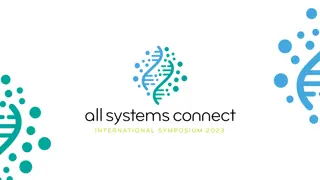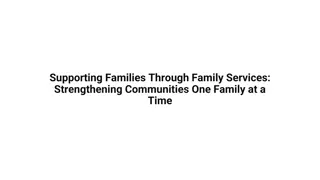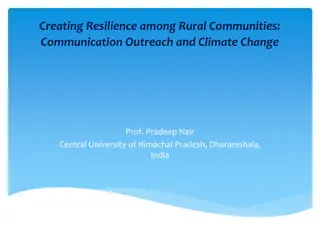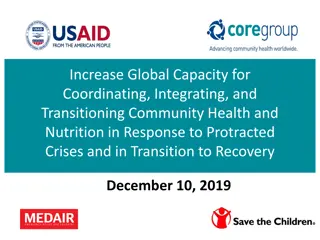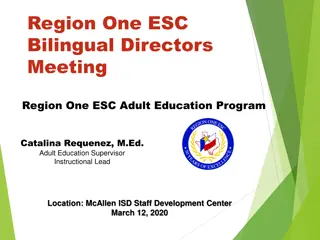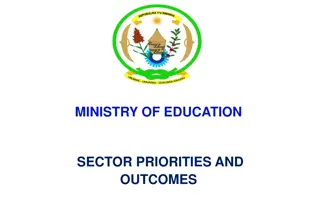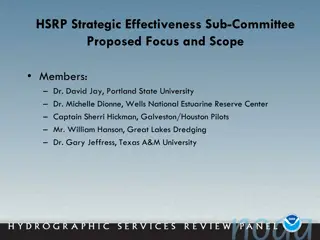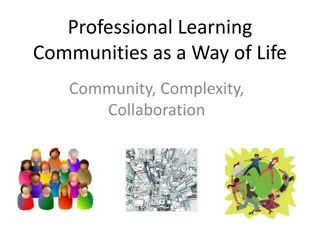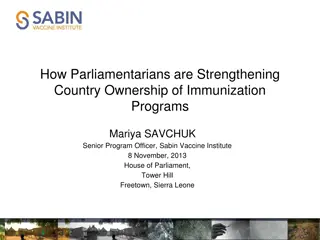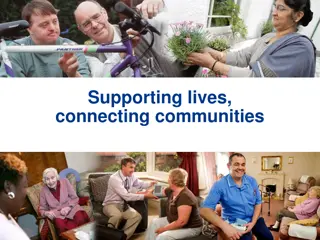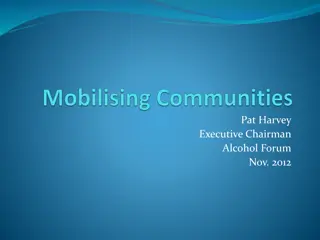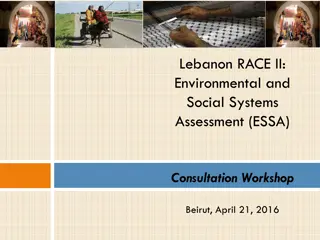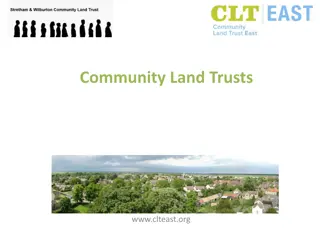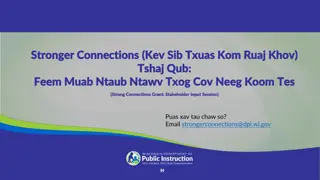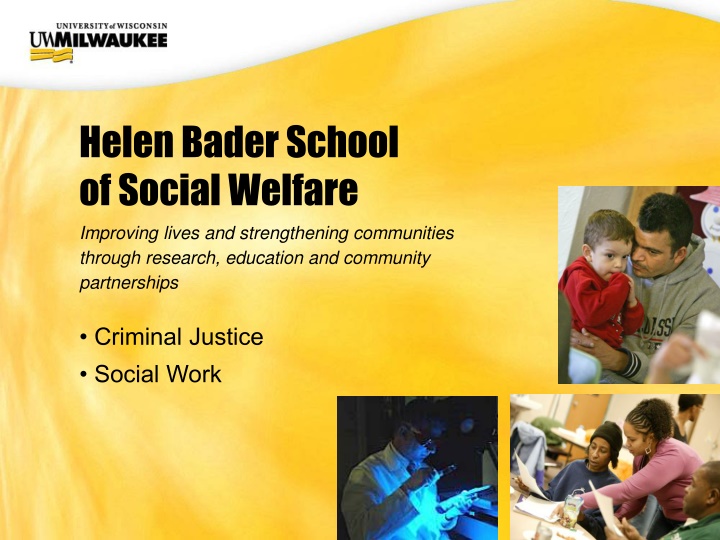
Improving Lives and Strengthening Communities Through Research and Education
"Helen Bader School of Social Welfare at UWM is dedicated to enhancing communities through research, education, and partnerships. They focus on criminal justice social work, psychological trauma, and substance misuse treatment. The office agenda includes defining psychological trauma, exploring effective treatment principles, and reviewing local trial results. The concept of trauma exposure includes potential traumatic events and various forms of non-physical and childhood traumas. SAMHSA's definition underlines the lasting adverse effects of individual trauma. The office also discusses simple vs. complex traumatic incidents and their impacts on individuals. Overall, the office aims to address trauma-related issues and support those affected by providing education and resources."
Download Presentation

Please find below an Image/Link to download the presentation.
The content on the website is provided AS IS for your information and personal use only. It may not be sold, licensed, or shared on other websites without obtaining consent from the author. If you encounter any issues during the download, it is possible that the publisher has removed the file from their server.
You are allowed to download the files provided on this website for personal or commercial use, subject to the condition that they are used lawfully. All files are the property of their respective owners.
The content on the website is provided AS IS for your information and personal use only. It may not be sold, licensed, or shared on other websites without obtaining consent from the author.
E N D
Presentation Transcript
UWM CIO Office Helen Bader School of Social Welfare Improving lives and strengthening communities through research, education and community partnerships Criminal Justice Social Work
UWM CIO Office Psychological Trauma & Its Implications for Treatment of Substance Misuse 9th Annual Help & Hope Conference on Substance Use Disorders Gateway Technical Colleage October 6th, 2017 Dimitri Topitzes, PhD, LCSW Clinical Director: Institute for Child & Family Well-Being Associate Professor: UW-Milwaukee
UWM CIO Office Agenda Define psychological trauma Discuss primary and second symptoms of trauma Review prevalence of trauma Explore principles of effective trauma treatment Explore implications for comorbid SUDs/Trauma treatment Review results local trial combining SUDs and PTSD screening
UWM CIO Office Exposure: Potential Traumatic Event Trauma is a two-fold phenomenon: exposure and symptoms Potential traumatic event (as defined by DSM V): Actual or threat of: Death, serious physical injury, sexual violence Direct experience, witnessing, or learning about love one, secondary exposure Examples childhood physical abuse, witnessing IPV, invasive medical procedures, war, violent crime, car accident, etc. Is this an exhaustive definition? Non-physical trauma (IPV that is emotional) Childhood trauma (Emotional abuse, neglect) Ongoing conditions (Poverty) Subjective (non-violent death of loved one, emotional bullying)
UWM CIO Office SAMHSA Definition of Trauma Individual trauma results from an event, series of events, or set of circumstances experienced by an individual as physically or emotionally harmful or life-threatening with lasting adverse effects on the individual s functioning and mental, physical, social, emotional, or spiritual well-being
UWM CIO Office Simple vs Complex PTEs Single Incident: Type I Often adulthood & recovery probable Childhood, recovery probable with support Multiple Incident: Type II Often prolonged or enduring Relational field Context of social exploitation Events are complex and lead to complex symptom presentation Often in childhood (due to vulnerable nature of children): CDT Can be adulthood: IPV, Victims of Sex Trade Those with significant mental health/bx health issues exp Type II
UWM CIO Office Prevalence of Complex Trauma Prevalence of individual ACEs across current and original ACE study samples____ Individual ACEs, Prevalence (%) ____________________ Abuse: Verbal Physical Sexual ACE Study (N = 3,948) Milwaukee Study (N = 199) _______________________ 7.8 7.9 17.1 38.2 41.2 21.6 Neglect: Emotional Physical 12.5 10.7 38.2 29.1 Household dysfunction: Domestic violence Household substance abuse Mental illness in household Parental separation or divorce Incarcerated household member _______________________________________ ______________________ 12.0 25.5 14.3 22.6 4.9 29.6 48.2 19.1 60.8 51.3
UWM CIO Office Cumulative Trauma Prevalence of Adverse Childhood Experiences among Men ACE Index Score, Prevalence, % ACE Study N=3948 Milwaukee Study N=199 0 34.2 15.7 1 27.3 11.6 2 16.4 17.2 3 9.3 8.1 4 4.8 8.6 8.0 38.8 5
UWM CIO Office Symptoms: Primary & Secondary Primary Intrusion (re-experiencing, intrusive memories, nightmares, dissociative flashbacks) Avoidance (effortful or automatic, thoughts and feelings and external reminders) Cognition &/or mood alterations (memory disturbance, self and world schemas, negative mood) Hyperarousal (hypervigilance, sleep disturbance, aggression and irritability, concentration problems)
UWM CIO Office Short Term Secondary Symptoms (Developmental) Attachment system Attention regulation Affect regulation Behavior regulation Cognitive development Social adjustment Academic performance Motivational development Self-concept
UWM CIO Office Long-Term Effects of Complex Trauma Mental health impairments Behavioral health impairments Physical health impairments Educational attainment Human capital Criminality
UWM CIO Office Trauma Services Trauma-Sensitive Trauma-Informed Trauma-Focused
UWM CIO Office Trauma-Sensitive Understand definition, consequences, and prevalence of trauma Enhance safety for trauma survivors through: Structure Trigger management Self-regulation Relationship building Example Schools
UWM CIO Office Trauma-Informed Assess for trauma exposure and symptoms Educate @ trauma exposure and symptoms Teach regulation skills (emotion, cognitive, etc.) Teach other related skills (social) Refer to trauma-focused interventionist Regulatory processes require more attention Trauma narrative emerging
UWM CIO Office Trauma-Focused Phase Based Treatment Safety and Skill-Building (present focus) Trauma Narrative (past focus) Meaning Making (future focus) Examples Cognitive Processing Therapy Prolonged Exposure Eye Movement Desensitization and Re-processing
UWM CIO Office What about Trauma co-occurring with substance misuse?
UWM CIO Office Prevalence of Trauma/SUDs PTSD patients: up to 4-14x higher rate of SUDs SUDs patients: 33-60% with PTSD Comorbid SUDs/PTSD complicates SUDs tx Comorbid SUDs/PTSD affects prognosis, e.g., higher relapse risk
UWM CIO Office SUDs/Trauma Link Trauma precedes SUDs: PTSD most often precedes SUDs (Self-Medication) PTSD/SUD patients use substances to regulate distress Childhood trauma precedes comorbid PTSD/SUDs SUDs can precede PTSD, but less common: High Risk Hypothesis & Susceptibility Hypothesis Latent Factor Model PTSD is internalizing disorder (negative emotion) SUDs if prone to externalizing bx (disinhibition)
Substance Abuse & Trauma Treatment UWM CIO Office Conventional Wisdom: Sequential Treatment (Pandora s box argument) Ascendant Model: Integrated Treatment
UWM CIO Office Integrated Treatment Models Psychoeducation: Trauma, SUDs, and linkages Exploring link btw PTSD and SUDs symptoms Management of sx s and distressing emotions Development of cognitive behavioral coping Sometimes exposure or trauma narrative
UWM CIO Office IT Examples Non-exposure Addictions & Trauma Recovery Integrated Model (ATRIuM) Seeking Safety* Integrated Cognitive Behavioral Therapy (ICBT) Trauma Exposure & Empowerment Model (TREM) Exposure with modifications Substance Dependence Post-Traumatic Stress Disorder Therapy (SDPT) Concurrent Prolonged Exposure (COPE).
UWM CIO Office Evidence for IT Does no harm Patient preferred Most if not all studied improve PTSD SUD harder to change, but some improve SUD In some cases no better than SUDs Tx alone Some models do better than SUDs alone (SS; ICBT; TREM) Evidence that IT superior to sequential for Complex PTSD
UWM CIO Office Questions & Themes Who benefits most with IT? CPTSD What s best duration? What components are critical? Present focus For whom should exposure be introduced? When should exposure be introduced? What model is best? Common factors How widely distributed are IT s?
UWM CIO Office Our effort at IT Combine AODA screening, brief intervention, and referral to treatment (SBIRT) with Trauma screening, brief intervention, and referral to treatment (T-SBIRT) Three Milwaukee-area clinics
UWM CIO Office SBIRT Defined A public health early intervention to address substance misuse Integrated into settings such as primary care Delivered by physicians, nurses, behavioral or mental health staff Components Screening: for use of alcohol and other drugs Brief Intervention: Awareness-raising and motivational enhancement for substance users at risk for hazardous, harmful or disordered patterns Referral to Treatment: Referrals to specialty care for individuals with substance use disorders
UWM CIO Office SBIRT Research Studies abound demonstrating the efficacy of SBIRT (Kaner et al., 2009) Heavy alcohol use was 38.6% lower at the six- month follow-up (Madras et al., 2009) But evidence shows SBIRT does not appear to alter disordered use (Glass et al., 2015).
UWM CIO Office T-SBIRT Protocol Discuss connection between stress and health Ask about current stressors Ask about past stressors or trauma using THS Screen for PTSD symptoms using PC-PTSD Ask about positive means to cope with stress, trauma and sx s Ask about less desirable means of coping Normalize difficulty in changing coping without addressing trauma Build motivation for mental/behavioral health referral if indicated Make an in-house or external referral if wanted Introduce grounding exercise if necessary
UWM CIO Office T-SBIRT Feasibility Study Results N=112 92.0% exposed to at least one PTE 55.4% positive PTSD Screening 62.5% referral acceptance
UWM CIO Office Table 1 AUDIT Score Alcohol Misuse Risk Category Sample Size % % 1 or more PTEs % Positive PTSD Screen % Accept a Referral Sample 0-7 Low Risk n=55 49.1 90.9 49.1 54.5 8-19 Medium & High Risk n=26 23.2 96.2 65.4 73.1 20+ Alcohol Use Disorder n=23 20.5 100 69.6 82.6
UWM CIO Office Treatment Acceptability Survey 9-item patient survey measuring: Effectiveness Appropriateness Severity Convenience Range 0-4 0= Not Acceptable & 4=Very Much Acceptable Mean: 3.00 (Very Acceptable)
UWM CIO Office Gabor Mate Power of Addiction TED Talk in Brazil https://www.youtube.com/watch?v=66cYcSak6nE Up to 10:02 minute mark.
UWM CIO Office Themes Addiction is a response to pain (medication theory) Addiction relieves pain whether: Hard addictions (chemical) or soft addictions (compulsive behavior or process addiction) both do the trick Pain emerges from early life history (comports with new findings in developmental neuroscience) Exposure to violence and neglect can lead to under- developed reward, motivation, and pleasure neuro- circuitry Addiction is not a genetic problem, but a result of gene-environment interaction (comports with new developments in genetic studies, i.e., epigenetics)
UWM CIO Office Thank you! Dimitri Topitzes Clinical Director Institute for Child and Family Well-Being Associate Professor Helen Bader School of Social Welfare University of Wisconsin-Milwaukee topitzes@uwm.edu

